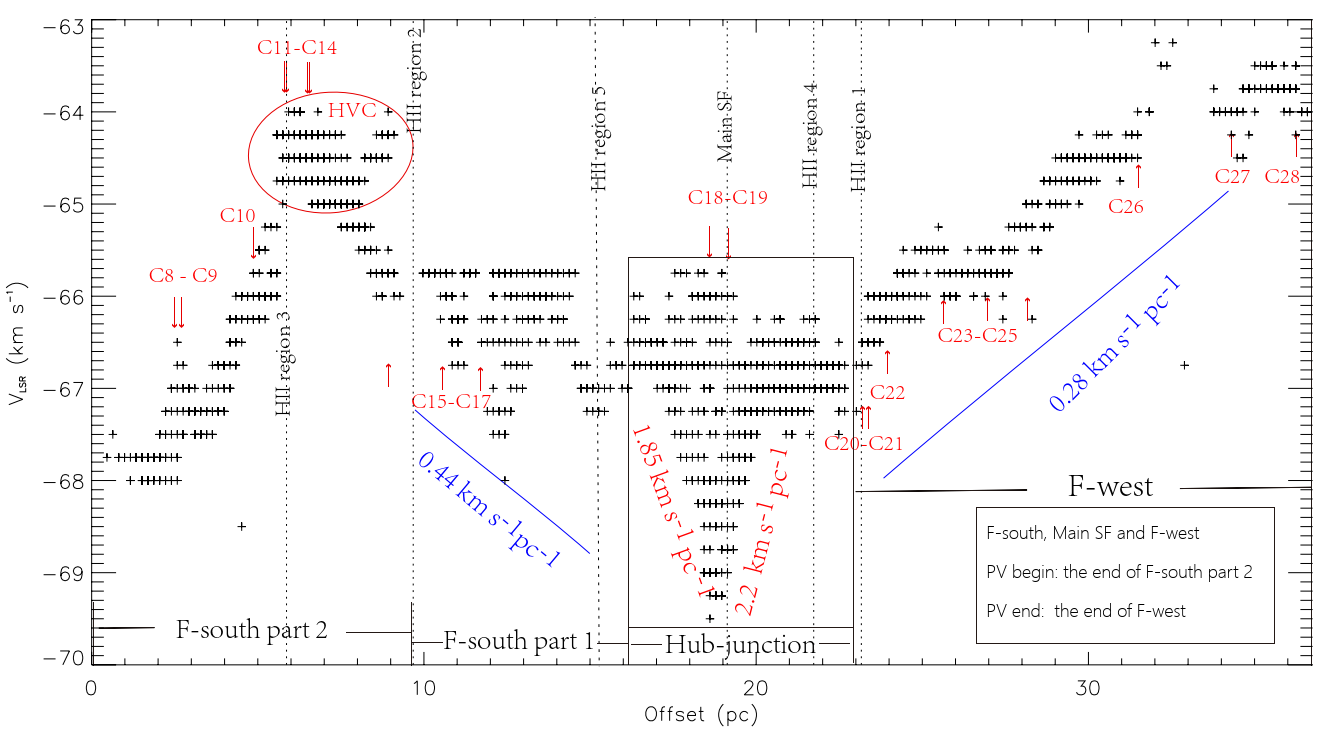

Researchers discover the gravitational collapse and accretion flows in hub filament system G323.46-0.08
Hub-filament systems are ubiquitous in molecular clouds. Most dense clumps and cores are formed in filaments and play a key role in the star formation process. Therefore, investigating the hub-filament system is one of the best ways to understand high-mass star formation.
Recently, MA Yingxiu , a PhD student from star formation and evolution group at the XAO, and her collaborators found a hub filament system G323.46-0.08, which provided evidences for gravitational collapse and accretion flows.
The study was published in Astronomy and Astrophysics (A&A) in August, 2023.
The filaments in molecular clouds may overlap to form a hub-filament, it includes a dense hub and filaments associated with it. In a scenario of global hierarchical collapse of molecular clouds is dominated by gravity, and these filaments constitute channels for gas funneled from the extended cloud to the dense clumps in the hub. In addition, the clumps in hub will accrete more materials from the surroundings, and they become more massive and are more likely to form high-mass star clusters.
The researchers found that the hub-filament system G323.46-0.08 consisted of three sub-filaments F-north, F-west and F-south, with the high-mass clump AGAL323.459-0.079 located at the hub center. Large scale accretion flows were observed in F-west and F-south, which indicated that they were transporting gas to the central clump.
In the hub, the gas velocity gradients increased significantly, and it showed a V-shaped structure, which revealed that the gas is undergoing gravitational collapse.
This study strongly supports the theory of global hierarchical collapse (GHC).
Gas velocity variation along the long axis of filament
Contact: MA Yingxiu
Xinjiang Astronomical Observatory, Chinese Academy of Sciences
Email: mayingxiu@xao.ac.cn
Article link: https://www.aanda.org/articles/aa/pdf/2023/08/aa46248-23.pdf
Attachment Download: